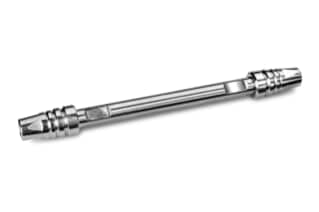
Torus Columns are specifically designed to use the complete range of capabilities of the ACQUITY UPC2 System to achieve fast, robust achiral separations. Torus Columns simplify the method development process with four completely new and innovative 1.7 μm chemistries for convergence chromatography. These columns are designed for excellent peak shape that eliminate or reduce the need for additives and offer added selectivity for a wide range of compounds and improved robustness.
|
Chemistry |
2-PIC |
|
Separation Mode |
SuperCritical Fluid (SFC) |
|
Particle Substrate |
Hybrid |
|
Temperature Limits |
60 C |
|
Maximum Pressure |
6000 psi (415 Bar) |
|
Particle Shape |
Spherical |
|
Particle Size |
1.7 µm |
|
Endfitting Type |
Parker-style |
|
Pore Size |
130 Å |
|
Format |
Column |
|
Surface Area |
185 |
|
System |
SFC, UPC2 |
|
Technique |
SFC, SFC/MS |
|
Inner Diameter |
3 mm |
|
Length |
150 mm |
|
eCord |
Yes |
|
UNSPSC |
41115711 |
|
Brand |
Torus |
|
Product Type |
Columns |
|
Units per Package |
1 pk |

What Are The Best Techniques For Isolating And Cleaning Analytes?
To isolate and purify specific components of interest from a sample, two common solid-phase extraction (SPE) techniques are employed. When the concentrations of target chemicals are below the limit of accurate quantification, the retention-cleanup-elution approach is usually adopted. This method enables the concentration of diluted samples and the enrichment of trace chemicals. Alternatively, if the desired sample component is present in high concentration, a pass-through cleanup method may be utilized. However, it's important to note that the pass-through cleanup approach does not result in sample enrichment.